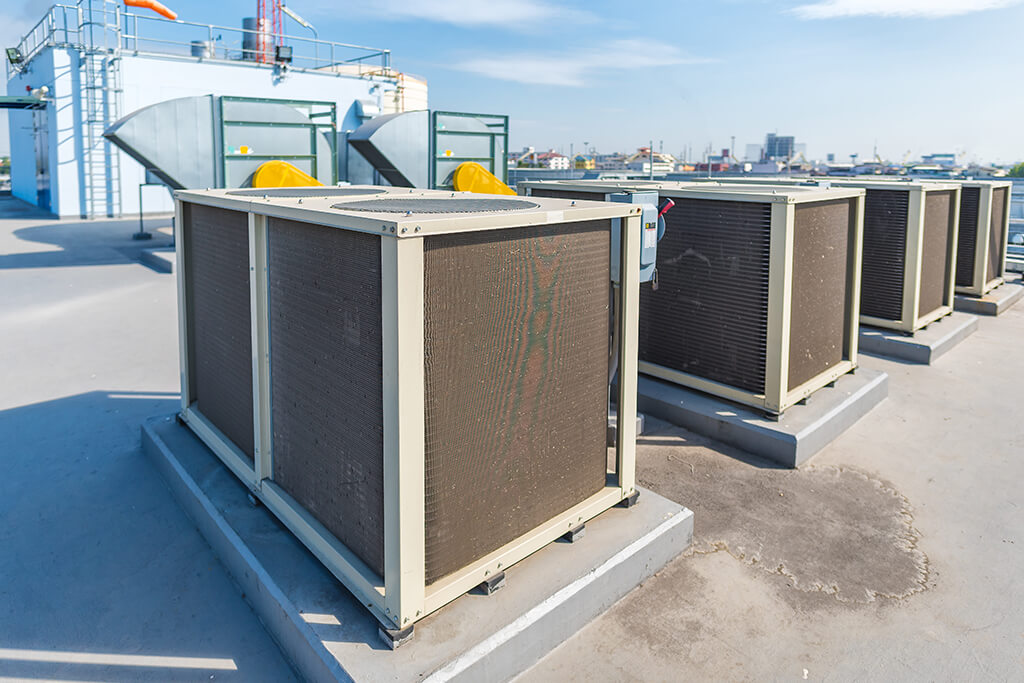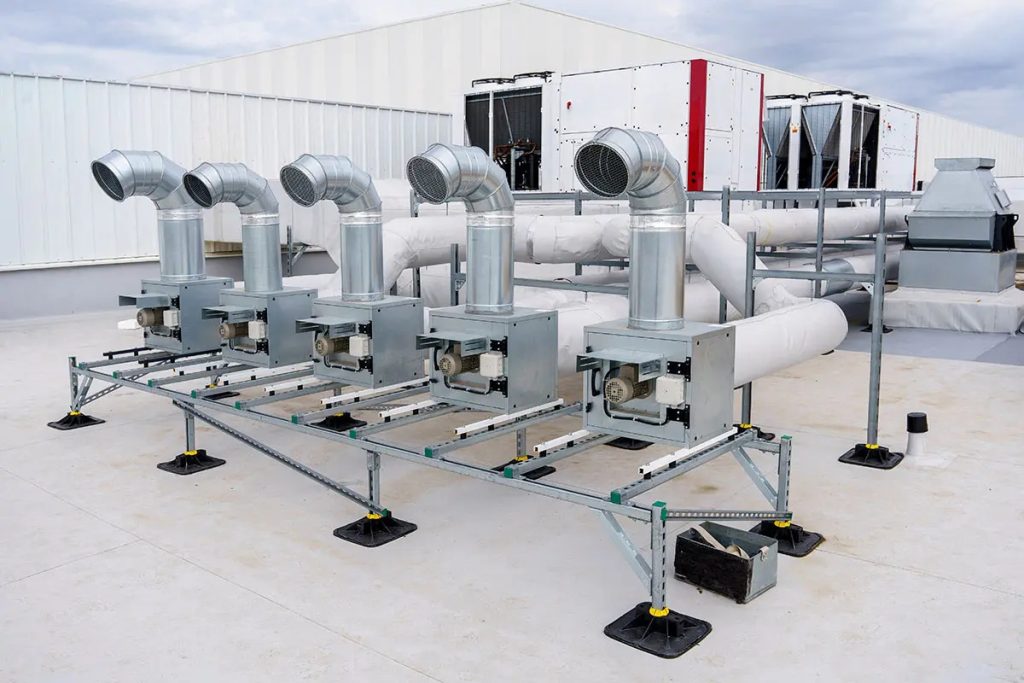Commercial HVAC (Heating, Ventilation, and Air Conditioning) systems can seem complex, but understanding how they work and how to maintain them can make a big difference. In this guide, we’ll walk you through the basics of commercial heating and cooling, different types of systems, common issues, and maintenance tips to keep your system running efficiently.
What Is Commercial Heating and Cooling?
Commercial heating and cooling systems are designed to regulate temperature and air quality in business establishments such as office buildings, restaurants, hotels, warehouses, and retail stores. Unlike residential systems, commercial HVAC units are larger, more powerful, and designed to handle greater airflow requirements.
A properly functioning commercial HVAC system ensures that the temperature stays at an optimal level (typically around 72°F) while maintaining indoor humidity between 40-60%. This helps improve air quality, comfort, and energy efficiency.
How Does a Commercial Heating and Cooling System Work?

A commercial HVAC system operates through three essential functions:
- Heating or Cooling the Air
- Heating is usually achieved using gas, oil, or electric furnaces, heat pumps, or boilers.
- Cooling involves air conditioners or chilled water systems that extract heat from indoor air using refrigerants.
- Air Distribution
- Fans and ductwork distribute conditioned air throughout the building.
- Ventilation removes stale air and brings in fresh air to maintain proper CO2 levels.
- Control Systems
- Thermostats regulate temperature settings.
- Direct Digital Controls (DDC) automate energy-efficient heating and cooling.
Types of Commercial Heating and Cooling Systems
Commercial HVAC systems come in different configurations, each suited for specific building layouts and needs. Here are the most common types:
Packaged HVAC Systems
- All-in-one units with a compressor, condenser, evaporator, and fan coil.
- Ideal for buildings with limited space.
- Commonly found in hotels, hospitals, and small commercial spaces.
Split Systems
- Uses separate indoor and outdoor units connected through ductwork.
- Best for small to mid-sized buildings.
- Allows for individual temperature control in different areas.
Rooftop Units (RTU)
- Installed on flat roofs, saving indoor space.
- Includes heating and cooling components in a single casing.
- Ideal for multi-story commercial buildings.
Variable Refrigerant Flow (VRF) Systems
- A ductless system that uses heat pumps or heat recovery technology.
- Offers highly efficient temperature control.
- Best for buildings requiring zoned heating and cooling.
Common Commercial Heating and Cooling Problems
Even with regular maintenance, commercial HVAC systems can develop issues. Some common problems include:
Short Cycling
- The system repeatedly turns on and off before completing a cycle.
- Can be caused by a dirty filter, faulty thermostat, or refrigerant leaks.
Refrigerant Leaks
- Causes inefficient cooling and increased energy bills.
- Symptoms include lack of cool air, hissing sounds, or ice buildup on coils.
Dirty Filters
- Clogged filters reduce airflow, leading to overheating and inefficient operation.
- Should be changed every 1-3 months.
Noisy Operation
- Loud squeaking, buzzing, or rattling noises can indicate worn-out belts, loose parts, or motor issues.
Malfunctioning Thermostats
- Incorrect temperature readings lead to unnecessary heating or cooling.
- Can be fixed by recalibrating or replacing the thermostat.
Clogged Drain Lines
- Water buildup from condensation can cause mold growth and water damage.
- Regular cleaning prevents drainage problems.
Maintenance Tips for Commercial Heating and Cooling Systems

Proper maintenance can prevent costly repairs and extend the lifespan of your HVAC system. Here are some essential maintenance tips:
Regular Inspections
- Schedule professional inspections at least twice a year (before summer and winter).
- Look for leaks, worn-out components, and loose electrical connections.
Change Air Filters Frequently
- Replace filters every 1-3 months to maintain good airflow.
- Use high-quality filters to improve indoor air quality.
Clean Condenser and Evaporator Coils
- Dirty coils reduce system efficiency.
- Cleaning them ensures better heat exchange and cooling performance.
Monitor Thermostat Settings
- Optimize temperature settings to reduce energy consumption.
- Consider upgrading to programmable thermostats for better control.
Inspect and Clean Ductwork
- Blocked or leaky ducts waste energy and reduce airflow.
- Sealing and cleaning ducts improves efficiency.
Lubricate Moving Parts
- Motors, fans, and bearings should be lubricated to reduce friction and wear.
Address Issues Promptly
- Ignoring minor problems can lead to bigger, more expensive repairs.
- Contact a professional HVAC technician when you notice irregular performance.
Benefits of a Well-Maintained Commercial HVAC System
Keeping your heating and cooling system in top shape provides several benefits:
- Lower energy costs: Regular maintenance can reduce energy consumption by 5-40%.
- Better indoor air quality: Clean filters and ducts prevent dust and allergens from circulating.
- Extended equipment lifespan: Prevents wear and tear, avoiding premature breakdowns.
- Improved comfort: Ensures consistent temperature and humidity levels.
- Fewer emergency repairs: Detecting issues early reduces unexpected downtime and repair costs.
Final Thoughts
Commercial heating and cooling systems are essential for maintaining a comfortable and productive work environment. Understanding how they work, recognizing potential issues, and implementing regular maintenance can save your business money while ensuring reliable performance.
If you’re looking for professional HVAC services, don’t hesitate to contact an experienced commercial heating and cooling provider. Whether it’s routine maintenance, emergency repairs, or a full system upgrade, investing in your HVAC system today will keep your business running smoothly for years to come!
